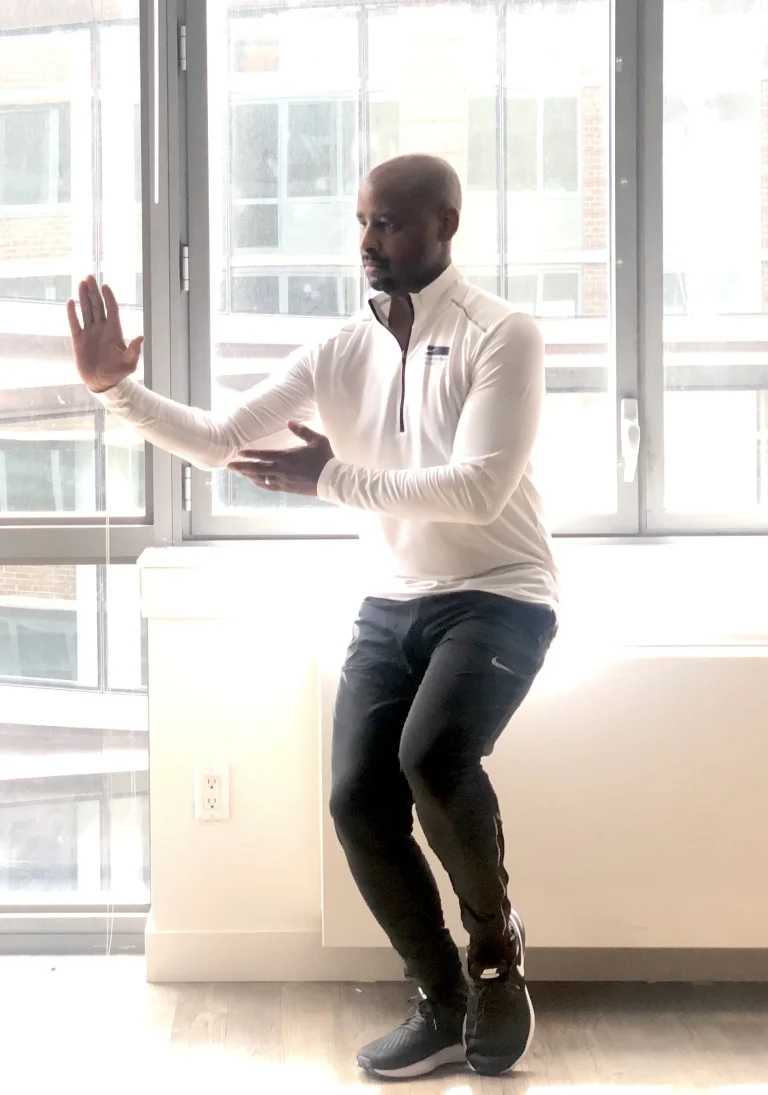
Understanding Whole Body Vibration Therapy
What is Whole Body Vibration Therapy?
Whole body vibration therapy (WBV) is a form of exercise therapy that involves standing, sitting, or lying on a machine with a vibrating platform. This therapy utilizes oscillating vibrations to create energy in the body, prompting muscles to contract and relax at a rapid pace. The foundational idea is that these vibrations stimulate the body in ways that conventional exercise may not, offering a range of health benefits, particularly for those unable to partake in traditional workout routines due to physical limitations.
The concept of using vibrations to influence muscle activity and overall physical well-being dates back to the early days of physiotherapy. Now, with advances in technology, WBV machines have gained popularity in gyms and rehabilitation centers, offering users an innovative path to fitness and recovery. Those interested in exploring the potential benefits of whole body vibration therapy will find it encompasses various applications, including muscle enhancement, pain relief, and improved balance.
The Science Behind Vibration Therapy
At its core, whole body vibration therapy harnesses mechanical oscillations—the up-and-down movements generated by the vibration platform—to stimulate the body’s various systems. When a user stands on the platform, these oscillations transmit energy throughout the body. This energy causes muscle fibers to contract involuntarily, similar to how muscles respond during regular exercise.
Research highlights that this involuntary contraction may lead to increased neuromuscular strength, enhanced flexibility, and improved circulation. Some studies have also indicated that WBV can positively affect the body’s cardiovascular health and assist in promoting better metabolic responses—a compelling feature for those who may struggle with conventional exercise modalities.
Types of Whole Body Vibration Devices
Whole body vibration therapy systems come in several formats, each designed to address different fitness levels and rehabilitation needs. The three primary types of vibration devices include:
- Oscillating Platforms: These machines pivot at a single point, creating a side-to-side motion ideal for simulating the effects of walking or jogging. This platform type is essential for users wanting to enhance balance and stabilize their core muscles.
- Linear Vibration Platforms: These platforms offer a vertical movement, creating a consistent up-and-down vibration that targets muscle activation and strength building throughout the body.
- Pivotal Vibration Platforms: Combining features of both oscillating and linear platforms, these devices impart an angled vibration, resulting in a more comprehensive activation of muscle groups.
Health Benefits of Whole Body Vibration Therapy
Improving Muscular Strength and Tone
Whole body vibration therapy has been recognized for its potential to improve muscle strength and tone effectively. Studies have documented significant gains in muscular performance through consistent use of vibration platforms, involving minimal effort compared to traditional strength training exercises.
The rapid muscle contractions induced by the therapy can lead to improved muscle hypertrophy (growth) and strength, particularly beneficial for those recovering from injuries or for older adults seeking to maintain muscle mass. For fitness enthusiasts, integrating WBV into a regular workout regimen may also lead to enhanced performance results, such as increased power and endurance.
Enhancing Flexibility and Balance
Flexibility and balance are critical components of physical fitness, especially as individuals age. Whole body vibration therapy contributes to improvements in these areas by actively engaging muscles and connective tissues during the vibrational movements. As the muscle fibers are encouraged to stretch and contract during therapy, the resultant effects can lead to increased joint mobility and improved overall flexibility.
Additionally, studies suggest that using vibration therapy regularly may reduce fall risks among older adults by enhancing balance. Physical therapists frequently recommend WBV as a supplementary tool in rehabilitation programs to help clients regain functional stability.
Potential Pain Relief and Recovery Benefits
Whole body vibration therapy has garnered attention for its potential to relieve pain and expedite recovery processes. Many users report decreases in muscle soreness and tension after sessions, attributed to the enhanced blood circulation and reduction of muscle stiffness triggered by the vibrations.
Research demonstrates that WBV can be effective in various contexts, including chronic pain management and post-operative recovery. Incorporating this therapy into recovery routines may reduce inflammation and accelerate healing for athletes and individuals recovering from surgery or injury.
How to Use Whole Body Vibration Therapy Effectively
Suggested Frequency and Duration
To maximize the benefits of whole body vibration therapy, users should follow specific guidelines regarding frequency and duration. For most individuals, engaging in WBV therapy two to three times per week may yield optimal results.
Sessions typically last between 15 to 30 minutes, depending on individual comfort levels and specific goals. Beginners should start on lower vibration settings to monitor their body’s responses, gradually working up to higher intensities as their comfort and strength increase. It’s essential to listen to your body and adjust the therapy frequency as needed.
Safety Guidelines for Users
While whole body vibration therapy is generally considered safe, adhering to established safety guidelines is crucial to avoid potential adverse effects. Recommended safety practices include:
- Consult a healthcare provider before starting therapy, especially for individuals with existing medical conditions or concerns.
- Begin with shorter sessions and lower intensity settings to gauge tolerance.
- Avoid using WBV therapy while pregnant or if you have cardiovascular issues, neurological conditions, or have had recent surgery.
- Maintain a stable stance and proper posture throughout the session to reduce the risk of injury.
Exercises to Combine with Vibration Therapy
To further enhance the effectiveness of whole body vibration therapy, users can incorporate specific exercises while on the vibration platform. Effective exercises include:
- Squats: Performing squats while standing on the vibration platform amplifies the engagement of lower body muscles.
- Lunges: Engaging in lunges while on the machine enhances balance and significantly challenges muscle groups.
- Core Stabilization Exercises: Exercises such as planks or seated twists can be executed on the platform to strengthen the core further.
Combining these exercises with WBV enhances muscle activation and results in heightened training effects, promising better gains in strength and flexibility.
Target Demographics for Whole Body Vibration Therapy
Applications for Athletes and Fitness Enthusiasts
Whole body vibration therapy has found a substantial audience among athletes and fitness enthusiasts. The unique nature of the therapy allows it to serve as a versatile tool for enhancing strength, improving recovery times, and reducing muscle fatigue after intense workouts. Furthermore, as athletes continue to push their limits, adding WBV into their training regimen can lead to more significant performance-related gains.
From runners looking to enhance their training efficiency to bodybuilders aiming for muscle growth, WBV is quickly becoming a notable ally in various sports disciplines.
Benefits for Aging Adults
As individuals age, maintaining health and mobility becomes paramount. Whole body vibration therapy provides a gentle, effective avenue to accomplishing these goals, particularly for older adults who may be less able to engage in rigorous physical activity. The lower-intensity movements facilitate muscle strengthening, improved balance, and enhanced flexibility without the risk of high impact or injury.
Research indicates that regular use of WBV can lead to better overall health improvements and quality of life, making it an appealing option for senior fitness programs and geriatric care.
Therapeutic Uses in Rehabilitation
Incorporating whole body vibration therapy into rehabilitation protocols has gained appreciation among health professionals, particularly in physical therapy settings. Its utility is evident in treating conditions such as arthritis, post-surgical recovery, and rehabilitation for chronic injuries.
Implementing WBV allows individuals undergoing rehabilitation to regain movement and strength gradually, owing to the low-impact nature of the therapy. Physical therapists can customize treatment plans incorporating WBV to target specific conditions for optimal healing and recovery.
Research and Evidence Supporting Whole Body Vibration Therapy
Recent Clinical Studies and Findings
The scientific landscape surrounding whole body vibration therapy is continually evolving. Recent studies have further validated its efficacy, showcasing benefits across various demographics and health conditions. One such study highlighted WBV’s positive impact on muscle strength and endurance, showing promising results in participants of all ages.
In addition, research has established a correlation between WBV usage and improvements in body composition, signaling its potential as an effective tool for weight management. These findings bolster the case for integrating vibration therapy into regular fitness and rehabilitation practices.
Common Myths and Misconceptions
As with many emerging therapies, misconceptions regarding whole body vibration therapy frequently arise. One common myth suggests that WBV is an effortless way to achieve fitness without any effort, which can lead to misguided expectations. In reality, while WBV can enhance an individual’s workout regimen, it requires consistency and complementary exercise to achieve substantial results.
Another misconception is that WBV is suitable for all individuals without exception. It’s crucial that users evaluate their health status with professional guidance before engaging in this therapy, to ensure its appropriateness for their unique situations.
Future Directions for Whole Body Vibration Therapy Research
Looking ahead, research on whole body vibration therapy promises further exploration into optimizing its applications and benefits. Topics of interest include understanding the precise mechanisms behind its efficacy, identifying the most effective frequencies and vibrations for targeted health conditions, and expanding its use across broader populations including those with debilitating conditions.
As research continues to unfold, the landscape of whole body vibration therapy may develop into a more significant cornerstone of holistic health practices, bridging the gap between traditional exercise rehabilitation and modern therapeutic techniques.






